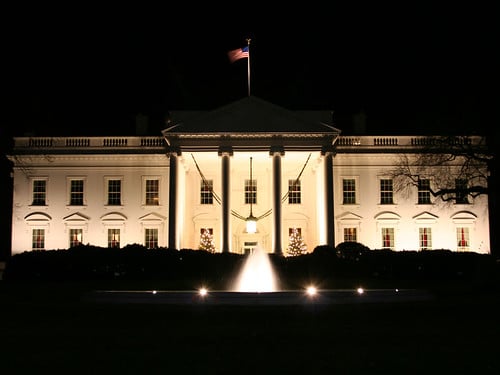Key Takeaways
- Contractors have started work on the new White House Ballroom.
- The $200 million project includes modern upgrades to the East Wing.
- Private donors will cover the entire cost, not taxpayers.
- Critics say the plan echoes America’s Gilded Age excess.
- The ballroom will host state visits, grand parties, and more for years.
White House Ballroom Groundbreaking Kicks Off
President Trump announced that workers have broken ground on the new White House Ballroom. He shared the news on his social media platform. He called the space “big, beautiful, and much-needed.” Moreover, he made clear that the project will not cost any taxpayer money. Instead, private donors and corporate sponsors will fund every dollar. The announcement marks the first time in over 150 years that a president has set out to build a ballroom at the White House.
Planning the White House Ballroom
In the summer, President Trump revealed his idea for a grand entertaining space. He noted that every president had dreamed of such a room. However, no leader ever started the work—until now. Construction crews will place the ballroom just outside the main residence. The site will be separate from the core White House structure. As a result, the historic rooms inside will remain untouched. In addition, the new design will blend classic elegance with modern convenience. For example, high-tech lighting and sound systems will sit alongside traditional chandeliers.
Modernizing the East Wing
At the same time, workers will upgrade part of the East Wing. This building houses guest rooms, offices, and reception areas. Consequently, visitors often pass through these halls before meeting the president. The modernization will include updated wiring, better heating and cooling, and improved security checks. Moreover, historic features like original moldings and windows will stay in place. Designers promise that the fresh look will honor the building’s past. Yet, they will weave in state-of-the-art technology. Therefore, the East Wing will shine as a bridge between old and new.
Private Funding and Costs
President Trump stressed that the ballroom will cost zero dollars from taxpayer funds. Instead, he claimed that “many generous patriots” and “great American companies” would step up. Additionally, Trump said he would chip in himself. So far, donors have pledged millions of dollars. However, critics want to see exact numbers and names. They worry that secret money could influence White House decisions. On the other hand, supporters say private funding frees taxpayers from the financial burden. They also point out that other government buildings sometimes receive private gifts.
Criticism and Historical Echoes
Some opponents have called the plan a return to America’s Gilded Age. Back then, the rich built lavish mansions and held over-the-top parties. They argue that a glittering ballroom sends the wrong message. Moreover, they say the country faces urgent needs like healthcare and infrastructure. Therefore, critics ask whether this project is a wise use of attention and goodwill. In contrast, supporters reply that the White House needs space to host diplomats. They claim that a modern ballroom will boost diplomatic ties and showcase American craftsmanship.
Future Events and Timeline
According to the president, crews broke ground on Monday. The full project could take up to two years. During that time, crews will pour concrete, install steel, and shape the interior finishes. Once complete, the White House Ballroom will host state dinners, cultural performances, and holiday celebrations. For example, next year’s New Year’s reception could take place there. Furthermore, future presidents may use the hall for ceremonies and large gatherings. Finally, the space will stand as a landmark for generations to come.
What to Expect Next
In the weeks ahead, construction crews will clear more ground and set up safety barriers. Curious visitors may spot heavy equipment and new signage on the South Lawn. Meanwhile, White House staff will coordinate security plans for the site. In addition, architects will fine-tune interior layouts. They will decide where tables, dance floors, and stages will go. Yet, the public will likely see only fences and machinery until the shell rises above ground level.
Conclusion
The White House Ballroom project has officially begun. It will blend historic charm with modern features while revamping the East Wing. Thanks to private donors, it won’t tap taxpayer funds. However, it has sparked debate over priorities and historical parallels. Yet, the work moves ahead, promising a new venue for state visits and grand celebrations. Over the next two years, Americans can watch as plans turn into reality.
Frequently Asked Questions
Why is the White House building a new ballroom?
Leaders wanted a dedicated space for large events and state dinners. This project fills a gap in the historic residence.
How much will the ballroom cost taxpayers?
According to the president, zero. Private individuals and companies will cover all expenses.
Will the East Wing stay intact during construction?
Yes. Builders will modernize parts of the East Wing without altering its historic features.
When will the new ballroom be ready?
Officials estimate about two years for completion, depending on weather and supply deliveries.

